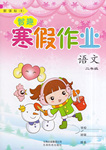题目内容
As the semester(学期) ended, students had a chance to turn the tables on their teachers.
They got to grade me anonymously(匿名地), assessing the ability of my thinking, my organizational skills and the depth of my knowledge. Such evaluations keep me alert to what works and what doesn’t. Students reflect my performance back to me, and I’m glad to learn what they think of my teaching so that I might try to improve.
This system reflects many aspects of my work. There is, of course, nothing wrong with it. But this system assumes that what students need is the same as what they want. Reading my evaluations every semester has taught me otherwise. Actually many students’ expectations for their courses have already changed, reflecting, in part, the business model many universities are following: classes are considered services, and parents are eager to get their money’s worth from their children’s education. Students feel pressure from their parents to get practical use from their courses.
This could make sense for an engineering course, but in my field, creative writing, which rarely trains up excellent 21-year-old writers, it is more difficult to provide the results that the career-minded students desire. Then I tried some teaching techniques to change the criticism of those unhappy students to the opposite and improve my student evaluations. My record would accurately reflect a smart, attentive, encouraging teacher. However, I would admit that they loved me simply because I agreed writing should be easy.
I know other teachers have done the same thing: teach your heart out to the teachable but be sure to please the unteachable; keep your ratings high, like a politician trying to improve his poll(民意调查) results. I believe in the struggle. But I still can’t help wincing(退缩) when I read, “The instructor is mean.” “Marcus is not committed to my work.” “This class sucks.” The business model has taught me that customers are always right. And maybe a few more dissatisfied customers would mean a better learning experience.
- 1.
What can we know from the underlined phrase “turn the tables on their teachers”?
- A.Students get a chance to have dinner with their teachers.
- B.Students judge and grade their teachers.
- C.Students begin to criticize and punish their teachers.
- D.Students take action to praise their teachers.
- A.
- 2.
Why have the students’ expectations for their courses changed?
- A.Because students want to improve other abilities.
- B.Because students feel great pressure from universities.
- C.Because students have to satisfy their parents.
- D.Because the business model has changed.
- A.
- 3.
What can we infer from the passage?
- A.Parents don’t care about their money spent on their children’s education.
- B.The writer adopted some teaching methods so that he improved his student evaluations.
- C.Similar to other teachers, the writer struggled to work as politicians.
- D.The students intended to punish their teachers by giving comments.
- A.
- 4.
What is the author’s attitude towards being graded by his students?
- A.Positive.
- B.Negative.
- C.Satisfied.
- D.Scared.
- A.
BCBA
1.猜测词义题。根据第2行assessing the ability of my thinking, my organizational skills and the depth of my knowledge.可知是评价老师。
2.推理题。根据第二段第5,6行classes are considered services, and parents are eager to get their money’s worth from their children’s education.可知父母付钱供孩子上学,希望从中得到回报,孩子也想让父母满意。
3.推断题。根据文章第三段第3,4行Then I tried some teaching techniques to change the criticism of those unhappy students to the opposite and improve my student evaluations.可知我采取了新的教方法。
4.态度意图题。根据文章第二段和最后一段。说明作者对于这种被学生评价的体系是认同的。
1.猜测词义题。根据第2行assessing the ability of my thinking, my organizational skills and the depth of my knowledge.可知是评价老师。
2.推理题。根据第二段第5,6行classes are considered services, and parents are eager to get their money’s worth from their children’s education.可知父母付钱供孩子上学,希望从中得到回报,孩子也想让父母满意。
3.推断题。根据文章第三段第3,4行Then I tried some teaching techniques to change the criticism of those unhappy students to the opposite and improve my student evaluations.可知我采取了新的教方法。
4.态度意图题。根据文章第二段和最后一段。说明作者对于这种被学生评价的体系是认同的。

练习册系列答案
 智趣寒假作业云南科技出版社系列答案
智趣寒假作业云南科技出版社系列答案
相关题目